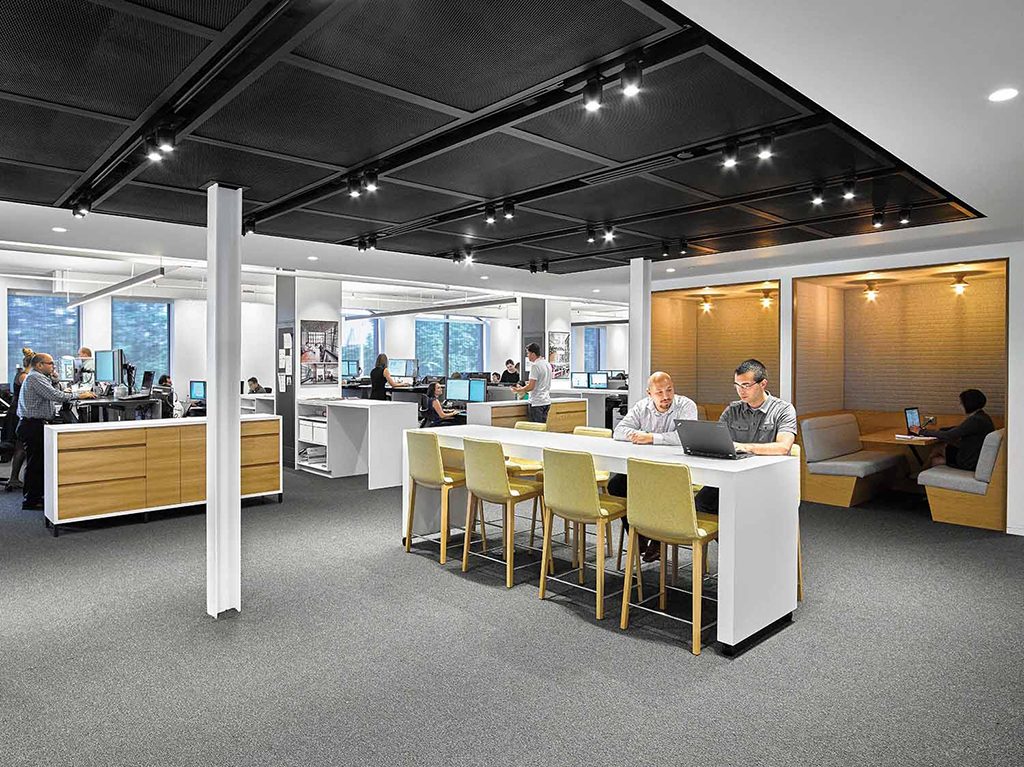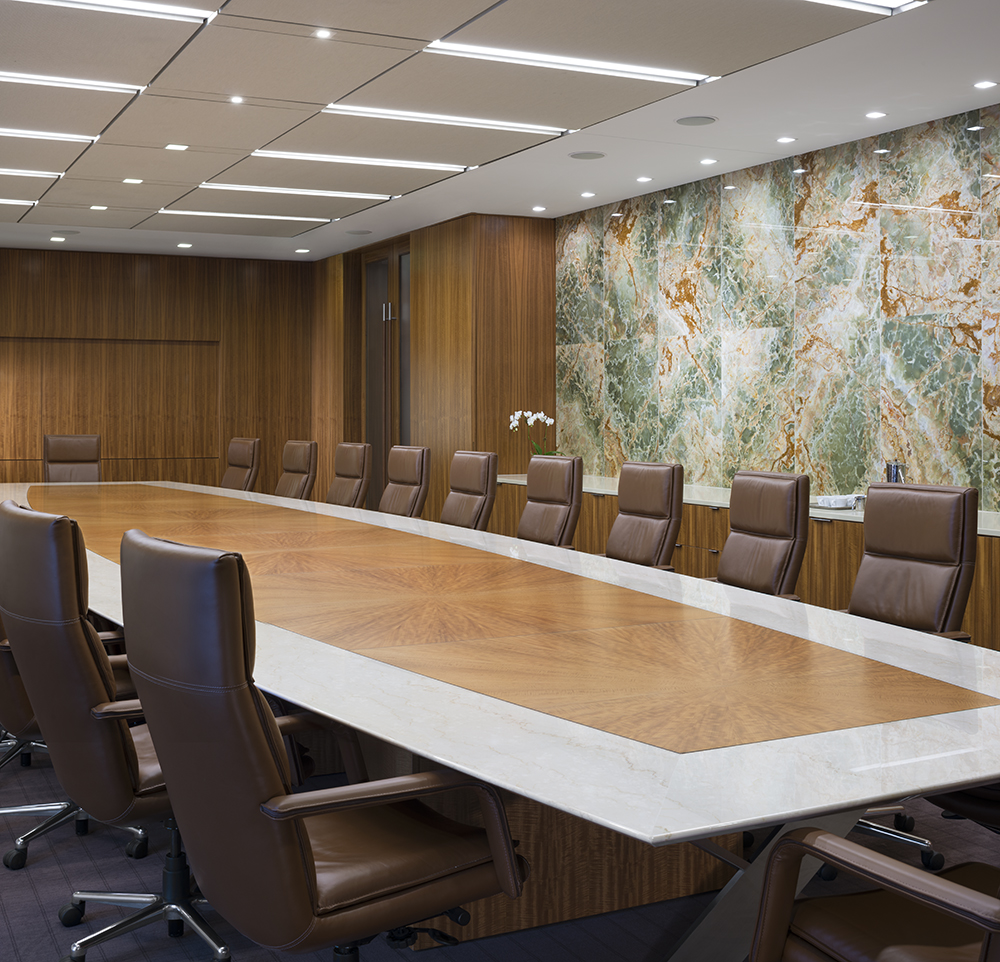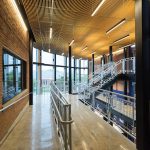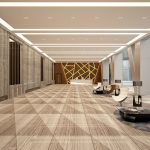How to Ramp Up Workplace Productivity With Lighting and Controls
Editor’s Note: This article originally appeared on FacilityManagement.net. See the original post here.

When it comes to designing and constructing an office’s electrical lighting system, facility managers must realize that lighting is no longer about seeing or being decorative.
Today, lighting is also about feeling, which directly impacts employees’ health, morale and productivity – all of which can significantly affect their work productivity and your company’s bottom line.
Moving the productivity needle even a wee bit can provide more significant financial and ROI gains than other cost-saving measures such as reducing energy, operational or leasing expenses.
Commercial real estate firm JLL developed a prominent formula to quantify the value of productivity improvements. It’s called the 3/30/300 rule.
Actual figures vary depending on numerous factors including location, but in general, organizational expenses (per square foot, per year) break down like this:
- $3 for utilities
- $30 for rent/mortgage
- $300 for payroll
Knowing that, consider this: The U.S. Energy Information Administration says the average commercial building is a little over 15,000 square feet.
Using the 3/30/300 proportions, annual spending for a business in an average building should break down to about $45,000 on utilities, $450,000 on rent and $4.5 million on employees.
Using this formula:
- Reducing utility costs by 50 percent will save this company $22,500 annually
- Improving space utilization by 10 percent will save $45,000
- Increasing employee productivity by 5 percent will save $225,000
The savings are self-evident. This blueprint illustrates that even a minor change in the employee category can significantly impact its bottom line.
It also shows why everything in the office environment should contribute towards the goal of worker productivity – lighting included.
But facilitating peak productivity among employees with the “right” light requires more than investing in an LED tunable white lighting system, which utilizes select lighting controls to adjusts to our daily circadian rhythms by automatically changing its intensity and color temperature throughout the day.
It also requires the right design, with several intermixing variables, including:
- The proper intensity and brightness
- At the right time of day
- In the suitable concentrations and locations in the office
To appease building owners and executives who answer to their bottom lines, the way a building’s lighting is installed and designed must be aligned to their tenants’ and workers’ internal clocks.
Let’s look at what you need to know to maximize employee productivity efforts and illuminate your office project in a way that will make employees feel better, look better and work better.
No More Sluggish, 2:30 Feeling with Tunable White Light
Cool-tuned lighting – that is, lighting with color correlated temperatures (CCTs) between 5000K and 7000K – at a higher intensity mimics the bright blue sky on a sunny day and brings natural-quality light indoors.
This bluish-white light effectively suppresses melatonin secretion, which makes us feel tired when the sun goes down. It stimulates alertness and makes us think cognitively sharper.
On the flip side, warmer light – like candlelight and dim incandescent lighting below 3000K – paired with a lower lighting intensity acts as the setting sun. It signals to our bodies that it is time to start winding down.
Knowing how specific color temperatures and intensities influence us, setting a lighting schedule that mirrors the sun would work best for making employees work comfortably and to their full potential. For example, a general lighting schedule for such an office open between 9 a.m. and 5 p.m. would resemble this:
| Time of Day | CCTs |
| 9 a.m. – 11 a.m | 6500K |
| 11 a.m. – 1 p.m. | 3000-4000K |
| 1 p.m. – 2 p.m. | 6500K |
| 2 p.m. – 5 p.m. | 3000-4000K |
Starting the general office lighting with cool light in the morning and warming up towards lunch maximizes morning productivity. Resetting the cycle with a blast of blue light after lunch prevents the mid-afternoon slump.
Warmer light at the end of the day prepares employees to close shop for the day.
Keep in mind that spaces around the office that do not require high concentration among employees can always have a CTT temperature below 3000K. These areas include bathrooms, kitchens and breakrooms. All are areas where the objective is to generate a more relaxed, easy-going atmosphere.

Different Lighting for Different People
There are other factors to consider when adequately lighting an office, not just the time of day and the metrics to mirror its brightness and intensity.
In fact, it is equally critical to know what a space will be used for when designing its lighting. If a room has a defined purpose, it is easier to create a lighting plan for it.
Once you know a room’s purpose, the next step is to determine what kind of task lighting is best to support the room’s function.
Examples of task lighting range from the specialty or adjustable desk lamps, under shelf/cabinet lighting and ceiling-mounted downlights.
Whichever light is selected, it should be adjustable by individual users and provide adequate light to accomplish the task and proper contrast levels.
Also, consider adding ambient lighting for general illumination. Indirect light fixtures are an ideal choice for ambient lighting – they put a soft wash of light on the walls and ceiling, so the room does not look or feel like a cave.
Another layer is decorative and accent lighting to accentuate architectural features and add a touch of flair.
Also, consider vertical lighting. The days of people working at desks barren of electronics and always looking down at horizontal surfaces are long gone. Today, it’s all about computers and always looking vertically. Options for vertical lighting often involve lower ambient lighting with brighter task lighting that people can adjust.
Having multiple layers of lights increases comfort and eliminates unnecessary glare and shadows.
If you only have a single, large light source in the ceiling, you cannot adjust your lighting much. However, with layered lighting, you can adjust individual task lights and ambient lighting levels as needed, customizing it as you see fit.
Controls Increase Job Productivity
That brings us to one last key ingredient: controls.
Human-centric lighting systems rely on controls to change the lighting throughout the day. That is perfect for employees who have unique needs and preferences at contrasting times.
Employees appreciate being able to adjust the environments around them, lighting included. It increases job satisfaction, productivity and general comfort.
Presets Set the Mood for Brainstorming, Negotiations
While it is essential to give users the ability to control their lighting, there must be a balance, so the building users do not override the carefully designed human-centric lighting system.
An effective way to manage controls for offices is to leverage presets, which are especially useful with a white-tuned system.
Users can choose from a range of color temperatures and intensities for different purposes to temporarily override the system with presets.
For example, a brainstorming meeting may work better under a “focus” preset that features high CCT, such as 6500k, and high illuminance (e.g., 500 to 1000 lx). A more contentious meeting – such as a contract negotiation – would do better with a “calm” preset that had low CCT (e.g., 2700k) and low illuminance (200 to 300 lx).
Dimmers Make LEDs More Versatile
Aside from presets, it is also a good practice to put dimmers on the lights. If you cannot install dimmers on all lights, consider installing them on individual task lighting.
Current controls make LEDs more flexible and versatile than any other light source. By changing nothing in a space or room other than the light with a simple command or preset, you can have a sharply-focused workspace in the morning, a café for team lunches and a pump-up meeting in the afternoon.
Bill Plageman is vice president of marketing and product development at Amerlux, an award-winning design-and-manufacture lighting company with an extensive portfolio that includes innovative interior and exterior lighting products. With more than 20 years of lighting industry experience, Bill has created successful lighting programs in the specification and national account segments of the market and works closely with product development managers to expand an extensive line of interior and exterior lighting solutions.
If you have more questions, we have more answers:

